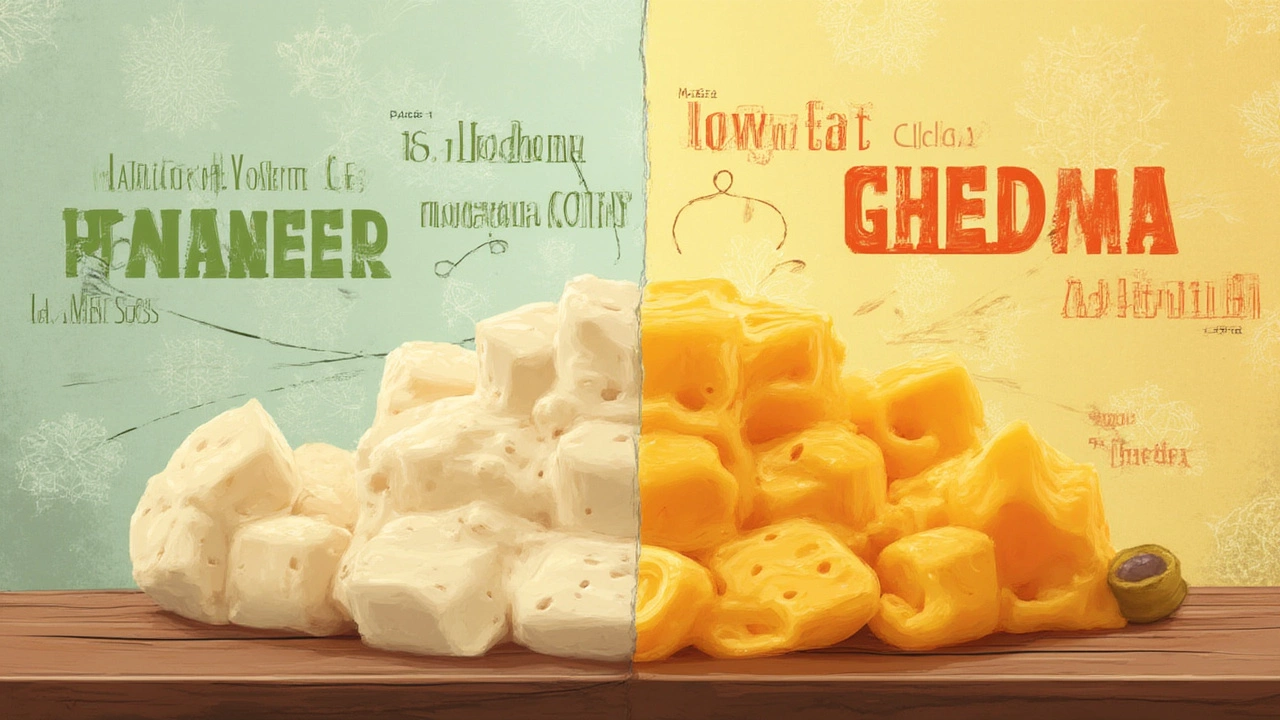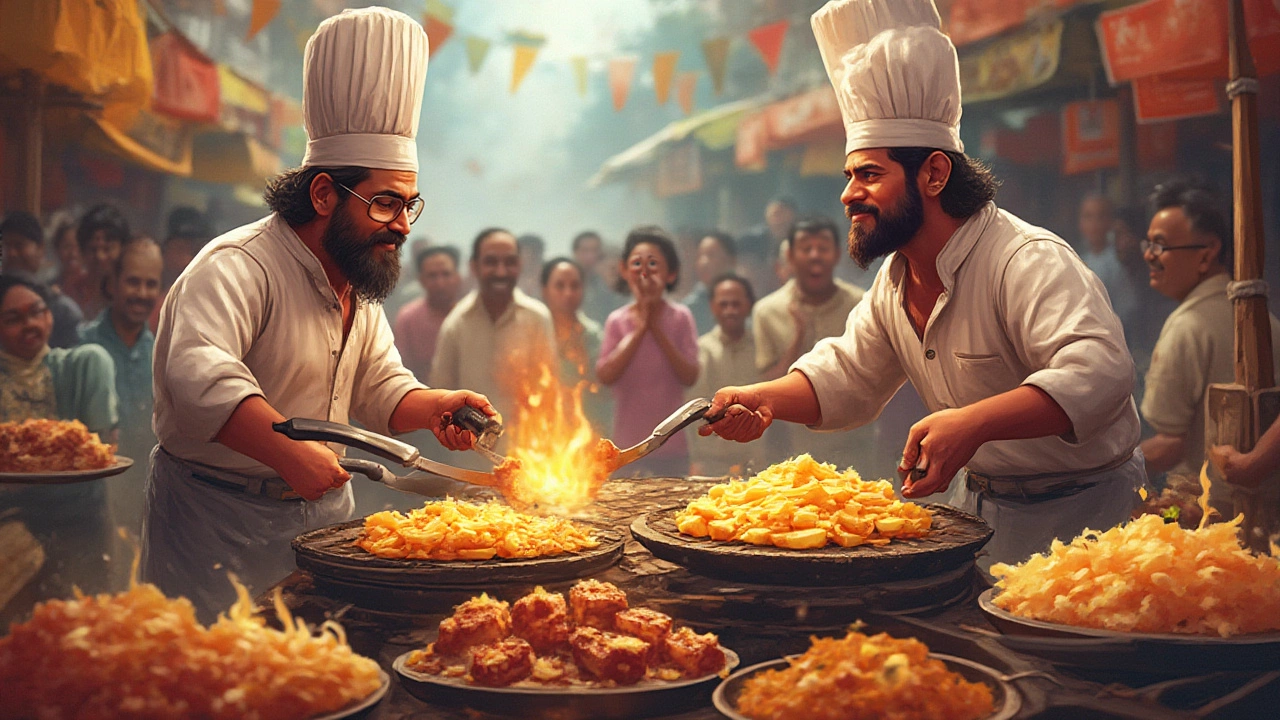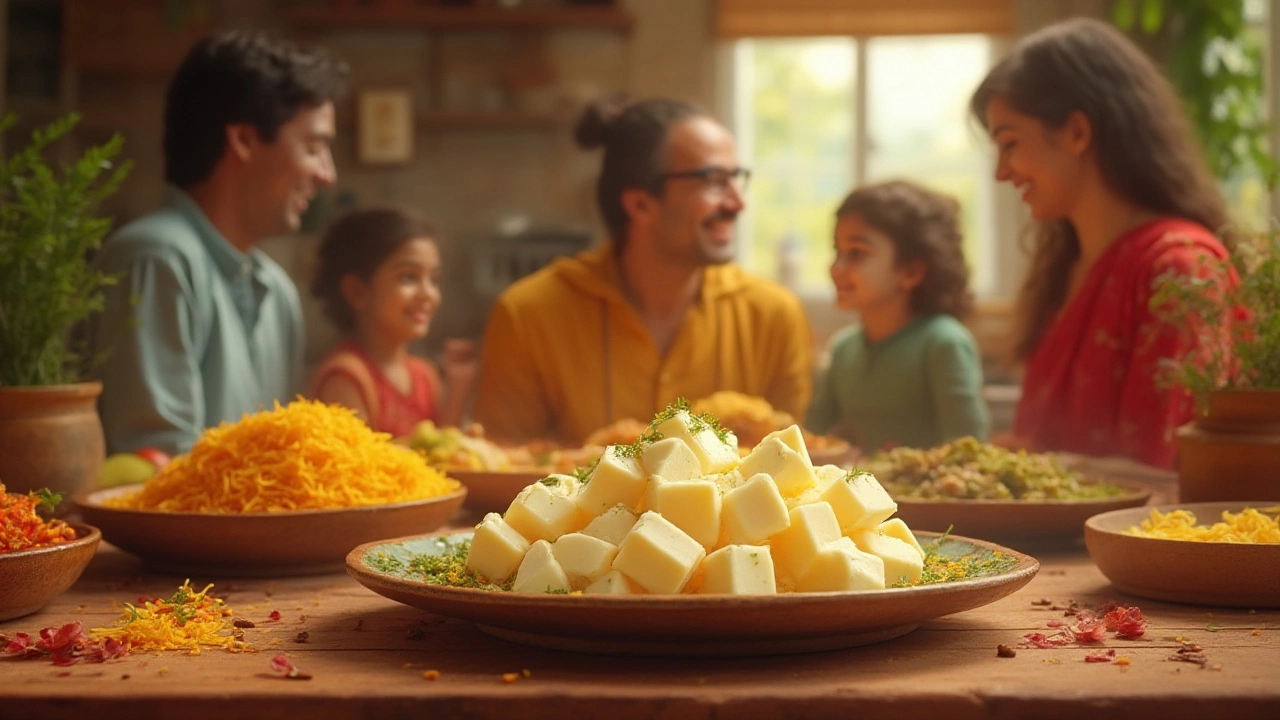Ever wondered whether to toss cubes of paneer into your curry or reach for that shiny block of cheese? The debate pops up everywhere – on family WhatsApp groups, at the office lunch table, and even in memes featuring muscular cows and smug buffaloes. Some people swear by paneer’s lightness; others argue cheese brings more joy to your tastebuds. You might be surprised at how close these two creamy mainstays are – and just how different they can be for your health. Not everything you hear is true, and sometimes the healthiest choice starts with knowing exactly what’s on your fork.
What Exactly Are Paneer and Cheese?
Let’s clear up the confusion: paneer and cheese aren’t twins, but rather close cousins. Both start with milk, but the journey from liquid to solid couldn’t be more different. Paneer, sometimes called Indian cottage cheese, is a fresh, non-aged cheese made by curdling hot milk with lemon juice or vinegar. No fermentation, no rennet (which sets traditional cheese), no waiting for complicated mold formations. The result is a slightly crumbly, easy-to-cube delight that stays soft even in stews and never melts into goo.
Cheese, on the other hand, is a grand family, stretching from soft mozzarella to hard cheddar, blue cheeses, and every slice in between. Cheese is typically made using rennet or specific bacteria that curdle the milk, kickstarting an aging and fermentation process. That’s why it usually develops a stronger flavor and aroma than fresh paneer. The types of milk used vary too: while paneer in India is made mostly from cow or buffalo milk, cheese can be made using sheep’s, goat’s, or even yak milk.
The simplicity of paneer makes it stand out. It’s ready in less than 30 minutes, needs just two ingredients (milk and acid), and usually skips salt unless you add it yourself. Processed cheese often packs a cocktail of preservatives, emulsifiers, and flavor enhancers that paneer never meets. But here’s something that stirs the pot – not all cheese is processed, and not all paneer is virtuous either. Supermarket paneer can sometimes sneak in added fats or thickeners, so don’t assume every white block is pure simplicity.
The key difference in the making shows up on your plate – paneer stays springy, doesn’t string or drip oil when heated, and soaks up flavors. Cheese can go gooey, can brown in the oven, and brings a range of tastes from buttery to stinky. And while kids might dunk both in ketchup with the same delight, your body handles them in surprisingly separate ways.
Packed with Nutrition: Stacking Up Paneer and Cheese
The question everyone asks: is paneer really better for your waistline and health? Or is cheese unfairly maligned in favor of its paler cousin? The answer hides in the details – how it’s made, what’s added, and how much you eat.
Paneer’s nutrition stats are pretty impressive. It’s packed with high-quality protein and calcium, making it a favorite among vegetarians for muscle-building and bone strength. On average, 100 grams of paneer offers about 18 grams of protein, 20 grams of fat, and 265 calories. It’s low in carbs, and unless you salt it generously or use full-fat buffalo milk, it’s usually lower in sodium and cholesterol than most hard cheeses. That’s why you often hear doctors recommending paneer to kids, pregnant women, and people with high blood pressure.
Cheese, though, brings its own toolkit. It’s even higher in protein (mozzarella has around 22 grams per 100 grams), offers more calcium, and comes loaded with vitamins like B12, A, and D. But there’s a hitch: cheese is often high in saturated fat, sodium, and calories. Cheddar, for instance, races past paneer with 400+ calories, 33 grams of fat, and over 600 mg sodium in 100 grams. That’s a lot, especially if you go heavy-handed with it on your pizza or toastie.
| Paneer (100g) |
Cheddar Cheese (100g) |
Mozzarella Cheese (100g) |
|
|---|---|---|---|
| Calories | 265 | 402 | 280 |
| Protein (g) | 18 | 25 | 22 |
| Fat (g) | 20 | 33 | 17 |
| Calcium (mg) | 208 | 721 | 505 |
| Sodium (mg) | 17 | 621 | 373 |
Watch for one catch with paneer, though: if you make it at home, you’re in charge of the fat, salt, and even the texture. Use double-toned milk for a lighter version or go rich with buffalo milk for that creamier mouthfeel. Store-bought paneer might have added fats or less protein than the homemade stuff. Processed cheese slices, in contrast, are best kept as an occasional treat: they’re often low in real cheese percentage but high in preservatives, sodium, and artificial flavors. Not the deal your body is bargaining for.
People sensitive to lactose might tolerate aged cheeses better than fresh paneer. Aging breaks down much of the lactose in cheese, whereas fresh paneer still contains natural milk sugars. So if milk upsets your stomach, try a small amount of hard cheese before giving up dairy altogether.
If you’re watching your weight, notice how paneer’s protein and fat combo can be super satisfying – you’ll likely eat less before you feel full. Cheese lovers, keep an eye on portions: an innocent-looking wedge can hide surprising calories. Every bite counts, especially when cheese tastes this good.

Culinary Stars: Cooking with Paneer and Cheese
Here’s where things get really fun. Paneer and cheese both transform a meal, but they play totally different roles in your kitchen. Paneer is versatile – it won’t melt, so it’s ideal in curries, stir-fries, even tossed on salads and skewers. Cheese stretches, bubbles, browns, and turns oozy – ask any pizza or grilled cheese fan. Not all cheese types behave the same way; hard cheeses like parmesan or cheddar act differently from soft cheeses like ricotta or brie.
Have you noticed how restaurant paneer feels firmer and holds its shape so well in recipes like paneer tikka? That trick is because chefs often press it overnight, squeezing out extra water for a denser bite. Homemade paneer tends to be softer unless you press it under a heavy plate. Cheese, on the other hand, can be grated, sliced, shredded, or literally melted into just about anything: impromptu cheese parathas, creamy pasta, or crunchy cheese toast.
If you want to cut the calories in your favorite palak paneer or kadhai paneer, try making your own paneer using low-fat milk. It doesn’t lose much in flavor, especially when loaded with spices and veggies. Fans of fusion food have started swapping cheese cubes for paneer in global recipes too – think paneer-stuffed jacket potatoes or paneer quesadillas. (Try it. You might like it better!)
Now, cheese isn’t just for Western cuisine. Indian regional dishes like cheese naan, cheese dosa, and even cheese-stuffed parathas have taken off in the last decade. There’s something magical about spicy chutneys meeting melty cheese. Still, in traditional Indian thalis, paneer remains the trusted star for vegetarians. For tiffin, snacks, lunch boxes, quick rolls, and even desserts like rasgulla or sandesh, paneer is simply easier to prep and kinder to your digestion – no greasy aftertaste.
Here are a few kitchen tips:
- Soak paneer in warm water for 15 minutes to restore softness if it seems rubbery.
- For low-carb diners, swap pizza cheese for paneer cubes baked with tikka masala or tandoori spices.
- Mash paneer into scrambled eggs or tofu for a protein punch in breakfast.
- Try using hard cheese shavings as a garnish, not the main act, in pastas and soups to keep sodium in check.
Busting Myths: Health Claims and Surprising Facts
Let’s face it: food myths stick around like stubborn masala stains on a white kurta. You’ve probably heard people say, “Paneer is always healthier than cheese!” or “Cheese is just junk food!” Both statements oversimplify things.
First up, “low-fat” isn’t always better. Studies have found that people who eat full-fat dairy (in moderation) don’t necessarily gain more weight than those who choose low-fat versions. In fact, the natural fats in paneer and cheese can actually help you feel full longer, making you less likely to snack on sugary treats. It’s about portion size and frequency, not just fat percentage.
Packed gym schedules have popularized paneer for muscle-building – and there’s truth to that! The protein in both paneer and cheese is complete, meaning it contains all the essential amino acids your body needs. Athletes in India often slam down protein shakes with crumbled paneer for a post-workout fix. But cheese, especially aged types, offers more calcium per gram, boosting bone health in people at risk for osteoporosis.
One big myth: “Paneer means less cholesterol.” It could – if made from toned milk, but full-fat paneer and cheese can both be rich in cholesterol. Good news? In 2024, the British Heart Foundation confirmed that eating moderate amounts of cheese doesn’t raise heart disease risk in healthy people. Your best bet is balance: enjoy both, but don’t let either become a daily centerpiece unless you’re balancing calories elsewhere.
Another fact: cheese offers more vitamin B12, which is crucial for brain health and energy. If you’re vegan or avoid animal products, you’ll need to supplement B12 from other sources or opt for fortified versions.
Some rumors warn of “hidden additives” in both paneer and cheese. Yes, processed supermarket cheeses and some brands of industrial paneer can have emulsifiers, thickeners, or even sugars. That’s why fresh, homemade, or reputable brands are worth the effort. A quick ingredient check – plain milk and lemon juice for paneer, milk and salt for cheese – tells you all you need to know.

Making the Healthiest Choice for You
So, is paneer healthier than cheese? There’s no one-size-fits-all answer, but here’s how to figure out what works best for your body and kitchen. If you’re vegetarian and chasing more protein without piling on sodium or preservatives, paneer is a trusty choice, especially when made fresh. If your main goal is stronger bones and meeting vitamin needs, cheese offers a bigger hit of calcium and B12 but comes with more salt and fat.
For anyone trying to lose weight or manage blood pressure, keep portions modest. Pair both with loads of veggies, whole grains, and lean proteins for meals that satisfy without sending your body on a calorie rollercoaster. If you’re lactose intolerant, experiment – you might find that aged cheese (like parmesan) doesn’t bother you the way fresh paneer does.
On busy workdays, paneer cubes tossed into a veggie stir-fry or mixed with masala as a sandwich filler can transform leftovers into protein-rich, quick-fix meals – no guilt, no heaviness. Cheese, meanwhile, shines brighter when used to add punch – a sprinkle over dal, a sliver in your salad, or a touch in stuffed parathas instead of a big, fatty chunk.
Families with kids will find paneer easier to feed picky eaters. Crumble it into khichdi, tuck it into rotis, or mash it with potatoes for tikkis. Elderly parents who need extra calcium? A bit of hard cheese on a cracker or with fruit can go a long way without denting appetite for real meals.
Here’s a secret from food bloggers in 2025: blending paneer with Greek yogurt makes a creamy, lower-calorie spread that can kick mayonnaise out of your kitchen. Cheese heads trying to cut back? Try grating ultra-flavorful aged cheese and using just a pinch to bring out flavor instead of blanketing everything in melted goo.
You don’t have to choose sides. Both paneer and cheese can fit into a balanced, healthy Indian diet. The trick is making smart swaps, reading labels, and sometimes, rolling up your sleeves and making it yourself. That’s when you control what goes in – and what stays out.
